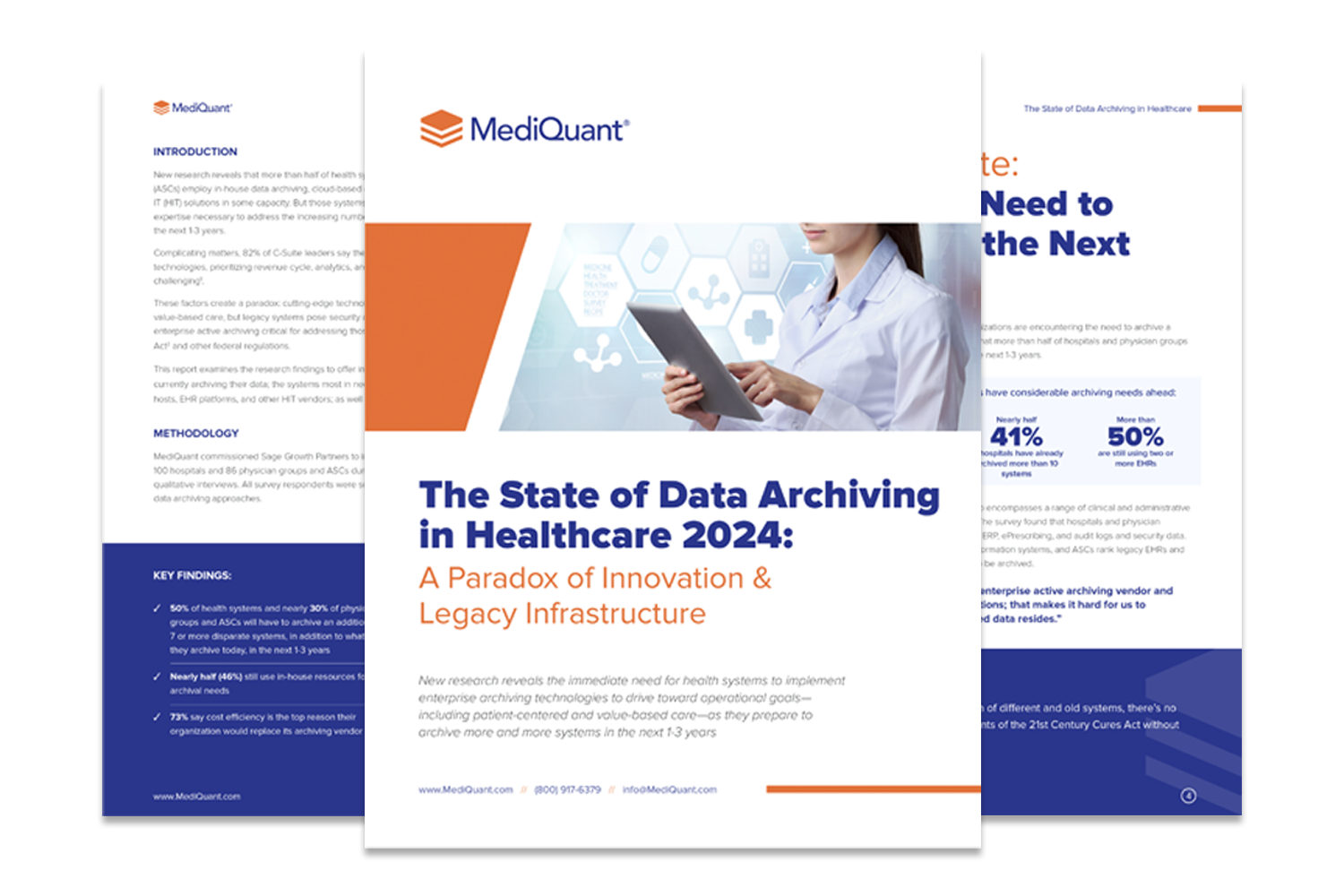EHR data migration is a complex task for most healthcare organizations. Successful migration projects require planning, data and scope analysis, data standardization, and quality assurance.
On the other hand, migrating medical data incorrectly has grave consequences. Providers may not be able to access their data, which can affect the quality of care given to patients.
When healthcare organizations discover that migrated data has errors during quality assurance, it can be a nightmare. It takes months to fix because of the work involved, disruption of workflow, and the cost of moving data.
Conversely, properly migrated data can reduce the cost of processing data views, improve reporting capabilities and increase the speed of accessing legacy data.
Here are three EHR data migration best practices that organizations need to adopt.
1. Gain a Full Understanding of Your Data
One of the earliest steps providers should take is to understand the totality of the data being moved. Healthcare data is complicated, and strict regulatory guidelines protect it.
EHR data contains input from various source applications, with complex data structures and various quality issues. In some cases, there are interfaces with dozens of applications within and outside the organization.
It is not uncommon to find many incomplete records and fields containing data that the field was not originally designed to hold. The first thing you need to do with this situation is to fully understand the source (its definition, structure, and contents).
In other words, data quality issues must be carefully addressed before the migration starts. Moving EHR data from an old application to a new one without fully understanding it will lead to a faulty migration.
2. Scale Your Network
Executing an EHR data migration project will lead to a demand for additional network and server resources until it is completed. That is why it is necessary to increase the capacity of your network before you start.
Many database experts, including Microsoft, will tell you to do your migration at an off-peak time. However, the implications of a short downtime in a modern healthcare facility dependent on EHR data availability are quite serious.
If your organization does not consider the sharp rise in performance required to support migration and daily workflow, there can be critical issues during the project.
Data that has been acquired and stored for decades will be moving through the network. For high transaction tables, there could be up to a billion records or more.
For a stress-free migration, there’s a need to upgrade both hardware and bandwidth. Most wireless infrastructure can’t handle the load of a full-scale EHR data migration. If the cost of upgrading is too high, it may be advisable to use a migration tool to provide a very brief increase in bandwidth and data transfer capacity.
3. Choose the Right Cloud Architecture
The distrust that most organizations had for the cloud is gradually fading away. Many leaders of healthcare organizations are prepared to put their sensitive healthcare data in the cloud.
Due to the cloud’s flexible nature, migrating data that is already in the cloud or that is placed in the cloud can offer appreciable cost savings. So in some cases, the first step towards a successful migration may be to place the data in the cloud (where feasible) and then use the right tools to migrate the data properly.
Partner With the EMR Data Migration Experts
Contact MediQuant at 844.286.8683 to see a free demo of our data extraction tool and process. You can also reach us through our contact page to discuss all your data archiving and migration needs.


